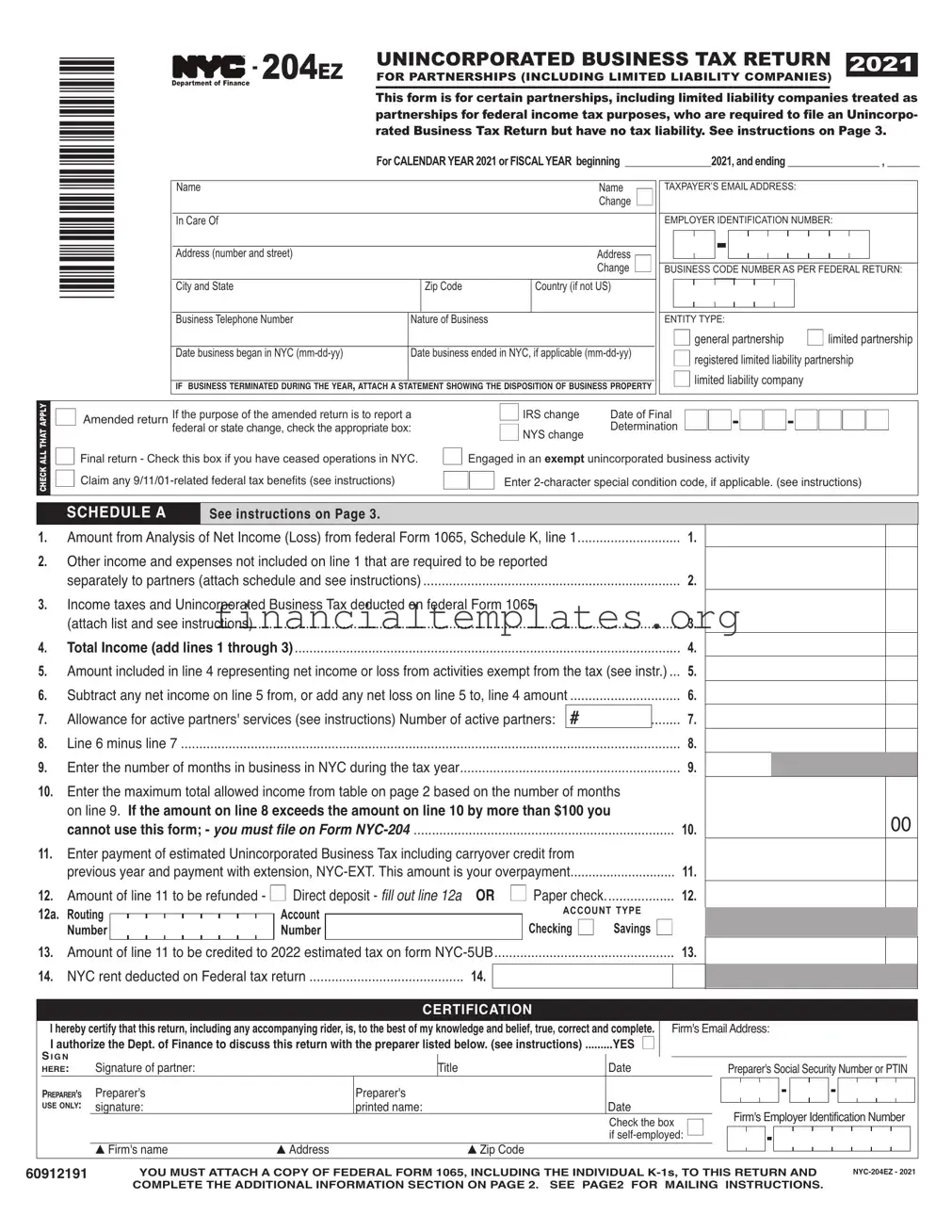The Unincorporated Business Tax Return for partnerships is closely related to the Federal Form 1065, U.S. Return of Partnership Income. Both forms serve as annual financial reporting tools for partnerships, detailing the income, gains, losses, deductions, and credits of the business. The purpose is to report the partnership's financial status to respective tax authorities. Federal Form 1065 requires partnerships to distribute individual K-1 forms to each partner, outlining their share of the partnership's profit and loss. This detail is paralleled in the Unincorporated Business Tax Return, which also necessitates attaching a copy of the federal 1065 form, highlighting how these documents work in tandem to ensure that partnerships accurately report their income at both federal and state or city levels.
Another document similar to the Unincorporated Business Tax Return is the Schedule K-1 (Form 1065), Partner's Share of Income, Deductions, Credits, etc. This form is a component of the Federal Form 1065 package and reports each partner's share of the partnership's income, deductions, and credits. It is directly linked to the Unincorporated Business Tax Return because it provides the detailed breakdown of individual partner's earnings and tax responsibilities. Ultimately, the information on K-1 forms is used by partners to complete their own tax returns, showing the interconnectedness between individual and partnership tax responsibilities.
The State Partnership Income Tax Return is also analogous to the Unincorporated Business Tax Return. Many states require partnerships to file an income tax return for the state in which they operate, similar to filing with the federal government. This state-level return reports the income, deductions, and credits of the business to the state tax department. The exact form and requirements vary by state, but the principal purpose is the same as the Unincorporated Business Tax Return – to account for and tax the earnings of partnerships within the jurisdiction.
Lastly, the Estimated Tax Payment form for partnerships, often referred to as the Form 1040-ES for individuals, parallels the Unincorporated Business Tax Return in that it deals with the taxation of earnings throughout the year. Instead of reconciling tax obligations after the close of the fiscal year, estimated tax payments require partnerships to pay taxes on income as it is earned quarterly. This preemptive approach to tax payment showcases how businesses manage tax responsibilities on an ongoing basis, highlighting another aspect of tax planning and management for partnerships akin to the yearly Unincorporated Business Tax Return process.



